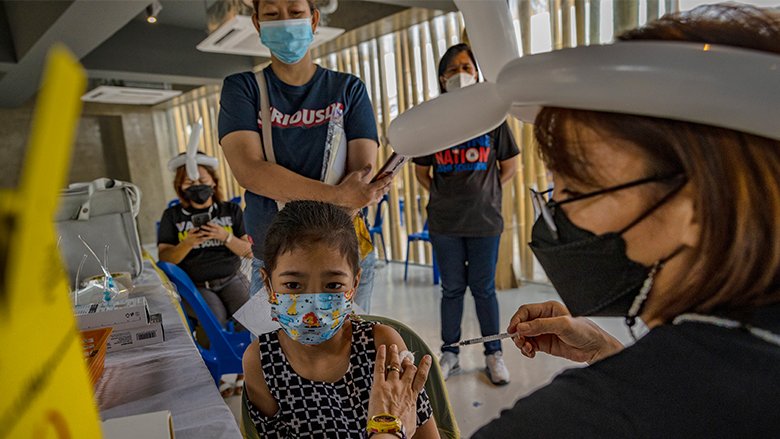For Vilma Campos, a mother of five from Quezon City, the Philippines, life has been better since her family received their vaccinations. “My daughter and my husband have gone back to work,” she said. “Life is no longer as hard (as it was at the beginning of the pandemic). I really hope we can all get through this pandemic.”
Vilma worked as a child caregiver before COVID-19 hit the country in early 2020. With quarantine restrictions forcing everyone to stay home, her employer did not need her to watch their children anymore. Her husband and daughter had also lost their jobs because of the community quarantine restrictions imposed by local authorities. It was a trying time, they often did not know where the next meal would come from. The arrival of vaccines gave them hope.
For Marjunell Mendoza, resident of Cavite, access to vaccines has given her and her family a sense of safety and security. She brought her children to a vaccination center so they too could have greater mobility. “If all the children are vaccinated, we feel that that the risk of them getting infected or having severe symptoms is significantly less.”
“Some of our relatives are medical practitioners, they made us realize that we should protect, not only ourselves, but also our kids. At the height of pandemic, we really prayed hard for vaccines,” Marjunell added.
“I got my child vaccinated against COVID-19 so that he can attend face-to-face classes,” said Bernadette Usog, a resident of Metro Manila.
Vilma, Marjunell, and Bernadette are among the millions of Filipinos whose lives have started to return to normal because of greater access to vaccines.

